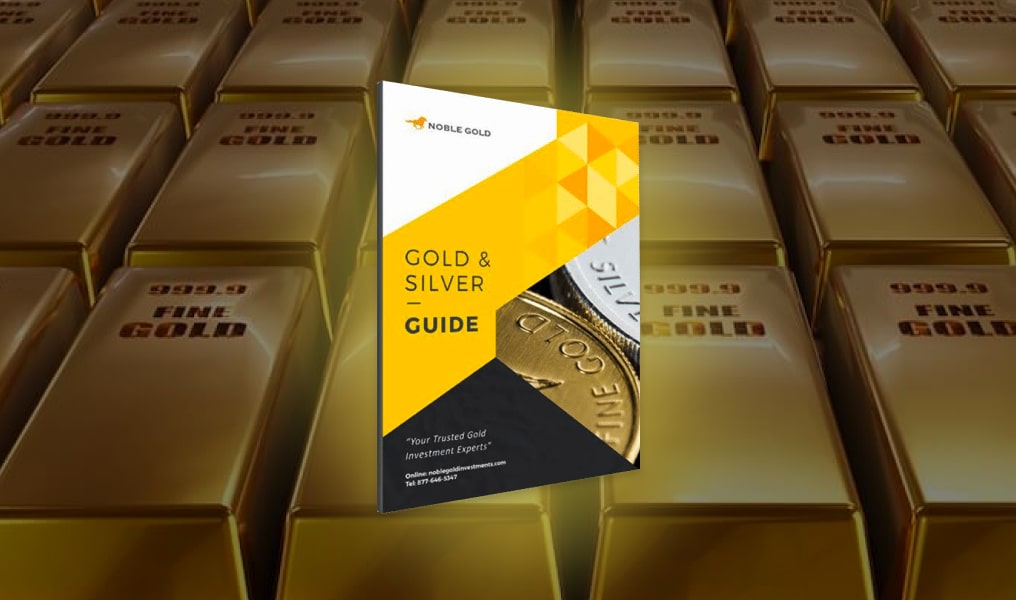While gold and silver prices continue to hit record highs, one precious metal that’s becoming increasingly popular among investors is platinum. Platinum is considerably rarer than gold and has had a high price point for some time, but because of its growing use in various applications, more investors are beginning to add it to their portfolios for diversification.
While platinum has many similarities to other precious metals from an investment standpoint, there are certain things to be aware of that can help maximize your returns. Keep reading to learn about the different strategies you can use.
Maintain A Long-Term Investment Perspective
Investing in precious metals like platinum requires a keen understanding of market dynamics, but perhaps more importantly, it requires a particular mindset — a long-term perspective. Adhering to this long-term approach can often distinguish between fleeting success and sustainable growth for your investment portfolio.
The Merits Of Patience In Platinum Investing
With its industrial and investment uses, platinum isn’t immune to volatile swings in price. However, these fluctuations should be viewed in the context of a broader time horizon. Investors who have the patience to ride out the inevitable ups and downs of the market are often rewarded, as the fundamental qualities that make platinum valuable don’t disappear overnight. The metal’s rarity, diverse industrial applications, and appeal in the manufacture of jewelry suggest that demand will continue.
In the wake of short-term market turbulence, a long-term perspective serves as an anchor and helps investors avoid making reactive decisions based on temporary changes. Instead, focusing on long-term trends enables strategic decisions that can lead to increased growth over time. Analyzing historical platinum performance data and tracking industry developments helps to develop a patient, focused investment strategy.
Long-Term Strategies For Asset Accumulation
A well-rounded, long-term platinum investment strategy could include regular asset accumulation to take advantage of dollar-cost averaging. By regularly buying platinum in fixed dollar amounts, investors can lower the average cost of their holdings over time. This strategy smooths the cost of investing through market dips and rises and mitigates the risk of investing a large amount at an inopportune time.
Applying this systematic investment plan requires discipline but can be particularly effective in uncertain markets. When prices are low, your investment buys more platinum; when prices are high, it buys less. Over time, the average purchase price can align with a long-term investment perspective.
Preparing For Future Demand
Various technological advances, particularly in green technologies such as hydrogen fuel cells and renewable energy, will likely ensure continued platinum demand. Investors who can anticipate and understand these trends have the opportunity to position their investments ahead of the curve and expect appreciation tied to emerging applications of the metal.
Strategic long-term platinum investments also require consideration of the supply chain lifecycle — from mining and refining to market delivery. Recognizing the time-intensive nature of these processes and their impact on market availability invites a more measured approach to investment, which can pay dividends when supply constraints arise, or new uses for platinum are developed.
Responding To Market Indicators
Long-term doesn’t mean static, and astute investors will monitor macroeconomic indicators, technological breakthroughs, and regulatory changes that could impact demand or supply in the future. While the day-to-day noise of the market should be taken with a grain of salt, profound changes that may or may not align with long-term views may require a strategic pivot.
By maintaining a long-term view, investors can weather short-term volatility while positioning themselves to benefit from the long-term growth potential of the platinum market. This view encourages a disciplined approach to wealth accumulation, allows strategic planning for future demand, and ensures that market changes can be responded to. In precious metals investing, a long-term perspective isn’t only advisable but necessary for those looking to achieve lasting success.
Maintain Regular Platinum Market Analysis
Investing in any commodity, including platinum, requires a rigorous and systematic approach to market analysis. Regular market analysis allows investors to adjust their strategies in response to or in anticipation of changes, ensuring sustainable growth and risk mitigation over time.
Incorporating Economic Indicators
Regular market analysis involves closely monitoring the key economic indicators that traditionally influence platinum prices. These include currency values (particularly the strength of the U.S. dollar), interest rates, inflation rates, and economic growth metrics, as platinum often moves inversely to currency values and directly with inflationary trends. Monitoring these indicators can help predict potential price movements and determine the timing of buy or sell decisions.
Additionally, monitoring industry-specific indicators, such as supply from major platinum-producing countries or demand from sectors such as automotive and technology, complements the macroeconomic perspective and provides a more nuanced view of the market.
Tracking Technological And Socio-Political Trends
Market analysis for platinum investments also involves keeping up to date with technological innovations and socio-political trends. Advances in green technology, for example, could increase demand for platinum, while a move towards alternative materials could reduce demand. Similarly, changes in the socio-political landscape, such as changes in mining regulations or the introduction of new tariffs, can have an immediate and significant impact on the global supply chain and pricing of platinum.
Investors need to look beyond the immediate market data and consider the broader implications of such trends. These could indicate long-term market shifts and highlight potential risks and opportunities in platinum investing.
Utilizing Analytical Tools And Resources
To effectively conduct regular market analysis, investors should utilize a number of tools and resources. These include financial news, market research reports, platinum price-tracking websites, and analytical platforms that offer real-time data and forecasts. These tools allow vast amounts of data to be turned into actionable insights, allowing investors to anticipate market movements rather than react to them.
In-depth analysis can be enhanced by sophisticated software and algorithms that offer predictive analytics while giving the investor a breakdown of complicated market data into more digestible and actionable information. Collaborating with financial analysts or participating in investor forums can further enrich an investor’s understanding by adding expert opinion and peer discussion.
Regular Review And Adjustment of Investment Strategies
It’s not enough to set a course and follow it blindly; the best strategies are flexible and responsive. Through regular analysis, investors are better able to make timely adjustments to their portfolios, whether by rebalancing asset allocations, changing the size and frequency of investments, or moving away from unfavorable conditions.
This dynamic approach requires consistency and discipline. Scheduled reviews, whether quarterly, bi-annually, or annually, ensure that investment decisions align with current market conditions and long-term objectives. Similarly, setting alerts at certain market thresholds can prompt an immediate review if drastic movements occur.
Be Aware Of Any Costs And Taxes Involved Platinum Investments
Investing in platinum is more than just understanding market trends and price forecasts; it’s also the additional costs and tax liabilities associated with such investments. These can impact overall returns and should be factored into the investment strategy from the outset.
Understanding The Cost Of Platinum Ownership
When purchasing physical platinum, whether in the form of coins, bars, or other collectibles, investors must consider the costs beyond the market price of the metal itself. These include dealer premiums, i.e., the additional costs investors pay to buy platinum above the spot price. Then, there are the shipping and insurance costs to ensure the safe delivery and storage of the asset.
For those who store platinum at home or with a third-party provider, there are costs for security and storage. Safe deposit boxes, home safes, and secure storage facilities involve rental or purchase costs, and insurance premiums to protect against loss or theft must also be considered.
Tax Considerations In Platinum Investing
The complexity of the tax rules for platinum investments shouldn’t be underestimated. Capital gains tax is a key consideration, as profits from the sale of platinum at a higher price than the purchase price are often subject to this tax. How these gains are taxed can vary greatly depending on local laws, the form of platinum ownership, and the time it has been held.
Some jurisdictions may classify certain types of platinum holdings as collectibles, which may be taxed at a higher rate than long-term capital gains. It’s important for an investor to understand these tax implications and how they affect different forms of platinum investment, whether it’s physical platinum, platinum exchange-traded funds, stocks in platinum mining companies, or futures contracts.
Tax Liabilities In Platinum Investments
The distinction between short-term and long-term ownership can significantly impact the tax rate applied to capital gains. Platinum held for more than one year before selling is generally subject to a reduced long-term capital gains tax rate, while a short-term investment held for one year or less may be taxed at the higher ordinary income rate. Investors should plan their buying and selling strategies with these periods in mind to optimize tax efficiency.
Additionally, certain tax jurisdictions have allowances or thresholds below which capital gains aren’t taxed. Those who are aware of these rules and plan transactions accordingly may be able to achieve significant tax savings. As different rules may apply, it’s also wise to consider the tax implications of passing on platinum holdings as part of an estate.
Compliance With Reporting Requirements
Legally, taxpayers are required to report all taxable events, including capital gains from the sale of platinum assets, to their respective tax authorities. Failure to comply can result in penalties, interest, and even criminal charges, so accurate record-keeping and timely reporting are non-negotiable.
For international investors or those trading in foreign markets, cross-border tax obligations may also come into play. Such scenarios may raise the question of which tax rules apply and how to manage tax compliance legally in different countries.
Tax professionals can offer advice tailored to the individual investment profile and help navigate the complicated tax landscape. They can ensure that investors meet their tax obligations and take advantage of any tax benefits and deductions they may be eligible for.
Diversify Your Portfolio With Platinum Today
With the current economic climate, diversifying your portfolio with tangible assets such as precious metals can provide a hedge against inflation and market volatility. SpaceXgold offers a wide range of ways for investors to invest in precious metals, from buying physical gold and platinum to store at home to investing in a tax-advantaged precious metals IRA.
Give us a call at . to speak to one of our helpful support team members about your options for investing in platinum, or click here to open an account today.






